
 |
|
|
Nursery & Forest
Volume 57 Number 20 Date 08/30/2012 ZIMMERMAN PINE MOTH - Light damage to Austrian pines was observed in Jefferson County. Infested trees showed the distinctive pitch masses associated with larval feeding. Pupation has occurred in recent weeks, and the adults are emerging and laying eggs. The resulting larvae will hatch by mid-September and overwinter in bark cracks. Their characteristic pitch masses appear in spring with the onset of larval feeding. Pitch masses that develop on branches should be pruned and destroyed before the adults emerge next August. Insecticides are also effective against the larvae if applied to the trunks of trees by mid-September and again from early April-May. OYSTERSHELL SCALE - A minor infestation of scales was found on ash trees at a nursery in Washington County. This insect infests apple, birch, cotoneaster, dogwood, elm, lilac, maple, willow and about 50 other woody plant species, in addition to ash. Horticultural oils and soaps or conventional insecticides are effective against the first and second generations of mobile crawlers between 275-500 degree days (base 50°F) and 1,600-1,700 degree days, respectively. Treatment is not advised now that the scales have adhered to the branches and formed protective waxy coverings. PEAR SAWFLY - Serviceberry shrubs in Dodge and Washington counties were noted to have been lightly defoliated by the larvae of this insect. The black, slug-like larvae feed on the upper leaf surface, skeletonizing the leaves. Larvae first appear in June, feed for a month, then drop to the soil to pupate. A second generation appears in August. Several control options are available including manual removal, horticultural oils and insecticidal soaps. --Liz Meils, DATCP Nursery Inspector OAK WILT - Oak wilt has been confirmed for the first time in Lincoln, Sawyer and Vilas counties. The infected trees were found in three locations: north of Tomahawk, south of Hayward and east of Eagle River. In all three instances, the symptomatic trees were in yards and the homeowners indicated that the oaks had been pruned or damaged in late spring. This terminal fungal disease kills oaks by inhibiting movement of water and nutrients from the root system, causing the leaves to wilt and fall. Symptoms progress rapidly, usually from the upper crown downward, and trees may die within a few weeks. Trees in the red and white oak groups are susceptible, but red oaks, including northern red, northern pin, and black oaks, are particularly vulnerable. Oak wilt is widespread throughout southern and central Wisconsin and continues to expand northward. The disease is now present in 58 of the state's 72 counties; the exceptions are Ashland, Bayfield, Calumet, Door, Douglas, Forest, Iron, Kewaunee, Manitowoc, Price, Rusk, Sheboygan, Taylor and Washburn. --Kyoko Scanlon, WDNR Forest Pathologist 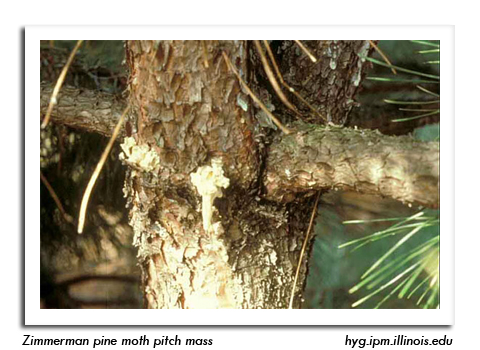
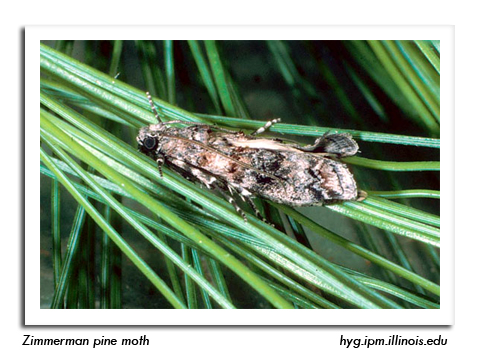
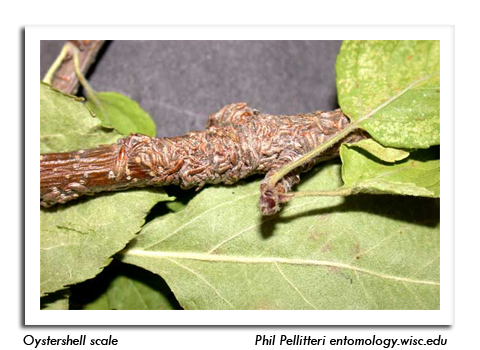

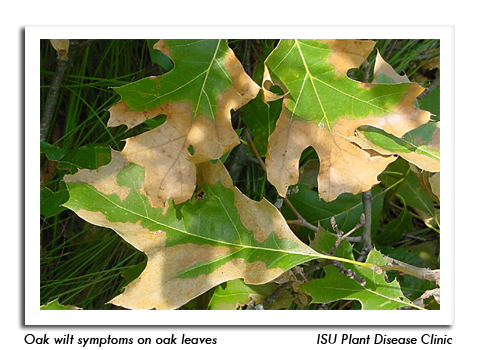
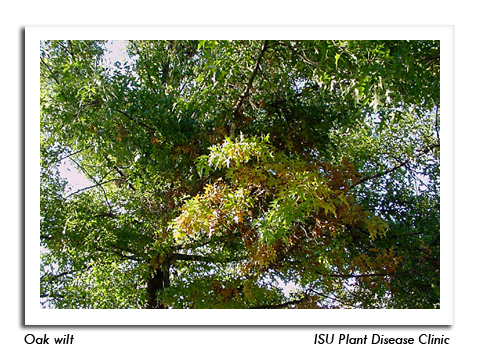
|
|
|